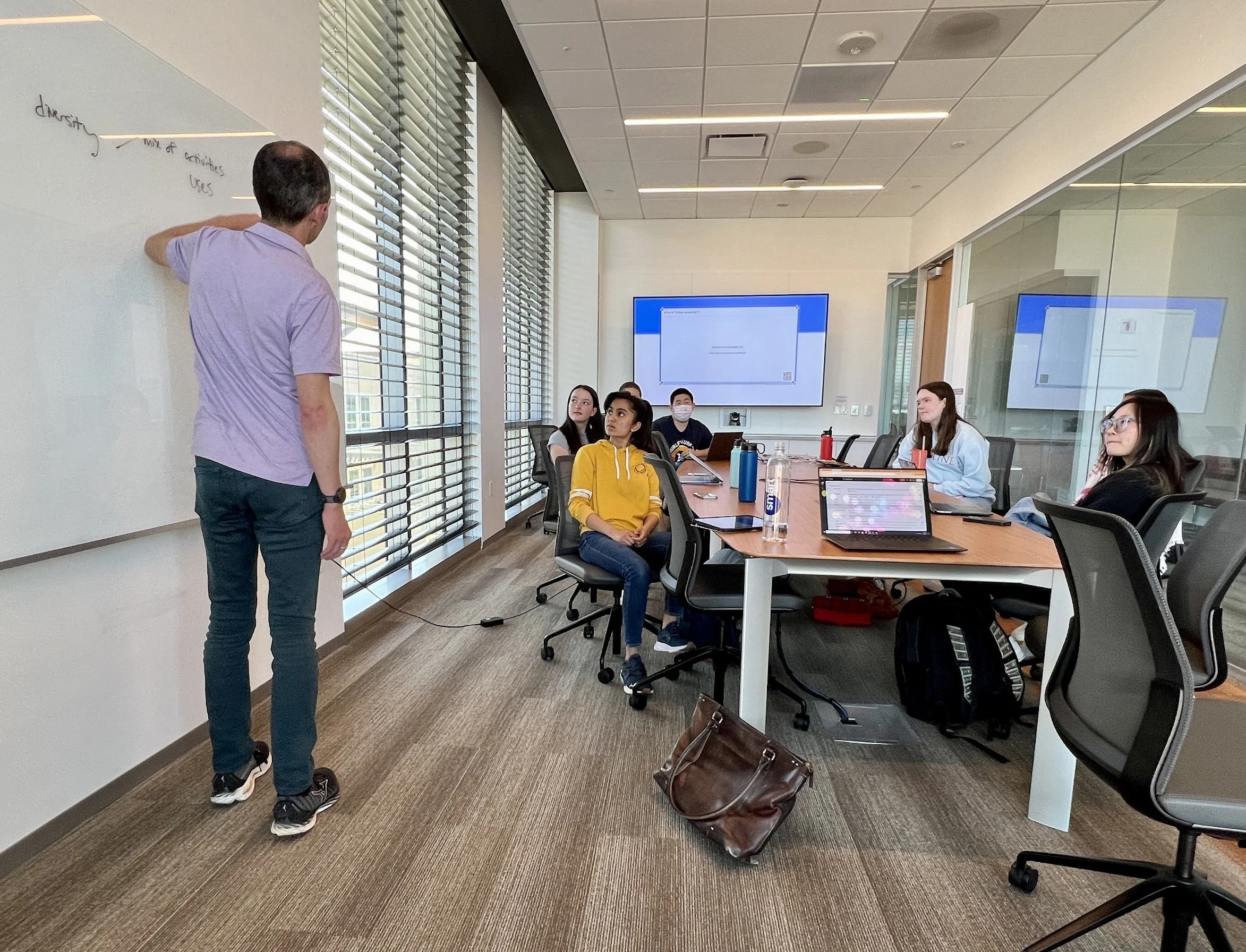Building an Equitable and Sustainable Community: The Vision of Santa Clara’s New Downtown
Each spring, Santa Clara students can enroll in one-credit micro-courses designed to generate interest and peer engagement around challenging questions. One spark seminar this quarter focuses on the city of Santa Clara’s development of a new 10-block downtown near the Santa Clara campus at the center of the Old Quad neighborhood, a revival of the original one demolished in the 60s.
By “creating a sustainable downtown in our backyard,” associate professor of environmental studies and sciences, C.J. Gabbe, and students examine the economic and environmental sustainability implications of the city’s initiative, also known as “the Santa Clara Downtown Precise Plan.” Gabbe’s seminar tackles various issues relevant to sustainable cities, including land use, affordable housing and access to public spaces, all within the framework of equity.
To provide a better understanding of the vast amount of planning necessary for this initiative, students took field trips to the proposed downtown area in Santa Clara and to Willow Glen, a local downtown area in San Jose.
Gabbe underscored the importance of diverse businesses and sustainable design practices to create a vibrant and resilient downtown.
The seminar has featured guest speakers, including local developers, restaurateurs and city officials. They provide valuable perspectives on the factors influencing investment decisions and the ecosystem necessary for vibrant downtowns to thrive.
“A lot of the implementation of the downtown plan relies on private funds,” said Gabbe.
The majority of the proposed area is privately owned, so in order for the initiative to come to life, it needs to make economic sense for the developers. Since most of the plan would be funded by the private sector, the public sector’s contributions would include open spaces, new streetscapes and a new street that would go through the downtown.
Despite the city’s efforts to facilitate community involvement, many residents were unable to attend the numerous meetings held throughout the planning process. In the surveys conducted, affordable housing was cited as a critical issue, an effort facing pushback from some community members.
“We want more affordable housing,” said seminar co-facilitator and Santa Clara alumnus Khanh Russo ‘01. “There’s a lot of fear and exclusionary tactics which opposing folks are holding, but they don’t know that their views and perspectives are exclusionary.”
In spite of challenges posed by housing shortages and the affordability crisis in the Bay Area, Gabbe and guest speaker Noni Ramos, CEO of the Housing Trust in Silicon Valley, remain optimistic about outcomes associated with financing affordable housing.
Gabbe believes the benefits outweigh the costs for current residents since more city residents lead to greater opportunities for city initiatives to be fruitful.
Despite the time and effort required for implementation, Gabbe remains hopeful about the momentum driving this initiative forward. He envisions a thriving new downtown that integrates seamlessly with the broader community. The city’s rich history, including its once-thriving downtown in Franklin Square, serves as inspiration for the future.
